Engineering Properties of PVA Fibre-Reinforced Geopolymer Mortar Containing Waste Oyster Shells
Abstract
1. Introduction
2. Materials and Methods
2.1. Materials
2.2. Mixing, Casting, and Curing
2.3. Test Methods
2.3.1. Flowability
2.3.2. Strength
2.3.3. Drying Shrinkage
2.3.4. Sorptivity
2.3.5. Rapid Chloride Penetration (RCP)
2.3.6. Porosity
2.3.7. Fibre Dispersion
2.3.8. Microstructure
3. Results and Discussion
3.1. Flowability
3.2. Compressive Strength
3.3. Flexural Strength
3.4. Drying Shrinkage
3.5. Sorptivity
3.6. RCP
3.7. Porosity
3.8. Fibre Dispersion
3.9. SEM
3.10. Eco-Efficiency
4. Conclusions
Author Contributions
Funding
Institutional Review Board Statement
Informed Consent Statement
Data Availability Statement
Conflicts of Interest
References
- Liao, Y.D.; Shi, H.Z.; Zhang, S.M.; Da, B.; Chen, D. Particle size effect of oyster shell on mortar: Experimental investigation and modeling. Materials 2021, 14, 6813. [Google Scholar] [CrossRef] [PubMed]
- Wang, H.Y.; Kuo, W.T.; Lin, C.C.; Po Yo, C. Study of the material properties of fly ash added to oyster cement mortar. Constr. Build. Mater. 2013, 41, 532–537. [Google Scholar] [CrossRef]
- Liu, R.W.; Chen, D.; Cai, X.L.; Deng, Z.M.; Liao, Y.D. Hardened properties of mortar mixtures containing pre-treated waste oyster shells. J. Clean. Prod. 2020, 266, 121729. [Google Scholar] [CrossRef]
- Mahesh, V.; Gobinath, R.; Kırgız, M.S.; Shekar, R.P.V.; Shewale, M. Global trends of research productivity in natural fibre reinforced composites: Comprehensive scientometric analysis. J. Nat. Fibers 2022, 1–18. [Google Scholar] [CrossRef]
- Awoyera, P.O.; Akinrinade, A.D.; de Sousa Galdino, A.G.; Althoey, F.; Kirgiz, M.S.; Tayeh, B.A. Thermal insulation and mechanical characteristics of cement mortar reinforced with mineral wool and rice straw fibers. J. Build. Eng. 2022, 53, 104568. [Google Scholar] [CrossRef]
- Tagbor, T.A.; Mohammed, L.; Mohammed, M.; Bruce-Mensah, M.M.; Tekpetey, S.; Armoo, E.A.; Adomah, R.; Arthur, T.D.; Agyenim, F.B.; Amoah, J.Y.; et al. The utilization of palm kernel shells and waste plastics in asphaltic mix for sustainable pavement construction. Sci. Afr. 2022, 16, e01277. [Google Scholar] [CrossRef]
- Muthusamy, K.; Wan Ahmad, S.; Hashim, M.H.; Mohamad, N.; Kirgiz, M.S.; Kamarudin, M.A.A.; Ravindran, G. Sulphate resistance of lightweight aggregate concrete comprising sieved palm oil fuel ash as fine aggregate replacement. Mater. Today Proc. 2022, 66, 2536–2540. [Google Scholar] [CrossRef]
- Kırgız, M.S. Water requirement for recycled concrete. In The Structural Integrity of Recycled Aggregate Concrete Produced with Fillers and Pozzolans; Awoyera, P.O., Thomas, C., Kirgiz, M.S., Eds.; Woodhead Publishing: London, UK, 2022; pp. 253–272. [Google Scholar]
- Khitab, A.; Serkan Kırgız, M.S.; Nehdi, M.L.; Mirza, J.; Gustavo de Sousa Galdino, A.; Karimi Pour, A. Mechanical, thermal, durability and microstructural behavior of hybrid waste-modified green reactive powder concrete. Constr. Build. Mater. 2022, 344, 128184. [Google Scholar] [CrossRef]
- Ashteyat, A.; Obaidat, A.T.; Kirgiz, M.S.; Al Tawallbeh, B. Production of roller compacted concrete made of recycled asphalt pavement aggregate and recycled concrete aggregate and silica fume. Int. J. Pavement Res. Technol. 2022, 15, 987–1002. [Google Scholar] [CrossRef]
- Liu, W.; Huang, R.; Fu, J.; Tang, W.; Dong, Z.; Cui, H. Discussion and experiments on the limits of chloride, sulphate and shell content in marine fine aggregates for concrete. Constr. Build. Mater. 2018, 159, 725–733. [Google Scholar] [CrossRef]
- Yang, E.I.; Kim, M.Y.; Park, H.G.; Yi, S.T. Effect of partial replacement of sand with dry oyster shell on the long-term performance of concrete. Constr. Build. Mater. 2010, 24, 758–765. [Google Scholar] [CrossRef]
- Lai, X.; Shankman, D.; Huber, C.; Yesou, H.; Huang, Q.; Jiang, J. Sand mining and increasing Poyang Lake’s discharge ability: A reassessment of causes for lake decline in China. J. Hydrol. 2014, 519, 1698–1706. [Google Scholar] [CrossRef]
- Katman, H.Y.B.; Khai, W.J.; Bheel, N.; Kırgız, M.S.; Kumar, A.; Khatib, J.; Benjeddou, O. Workability, strength, modulus of elasticity, and permeability feature of wheat straw ash-incorporated hydraulic cement concrete. Buildings 2022, 12, 1363. [Google Scholar] [CrossRef]
- Ashteyat, A.; Kirgiz, M.S.; Rjoub, Y.S.; Smadi, A.; Taleb, A. Roller compacted concrete with oil shale ash as a replacement of cement: Mechanical and durability behavior. Int. J. Pavement Res. Technol. 2022, in press. [CrossRef]
- Ashteyat, A.; Al Tawalbeh, B.; Mirza, J.; Kirgiz, M.S. Strength gain and elasticity estimations of roller compacted concrete made of ternary supplementary material. J. Adv. Compos. Mater. Constr. Environ. Nano Technol. 2022, in press.
- Obiri, S.; Gobinah, R.; Essumang, D.K.; Armah, F.A.; Ason, B.; Tagbor, T.A.; Kirgiz, S.M. Extraction of TiO2 from kaolin deposits in the Central Region, Ghana: An alternative material for the formulation of climate-smart Portland cement. Mater. Today Proc. 2022, 66, 2559–2567. [Google Scholar] [CrossRef]
- Luukkonen, T.; Abdollahnejad, Z.; Yliniemi, J.; Kinnunen, P.; Illikainen, M. One-part alkali-activated materials: A review. Cem. Concr. Res. 2018, 103, 21–34. [Google Scholar] [CrossRef]
- Ryu, G.S.; Lee, Y.B.; Koh, K.T.; Chung, Y.S. The mechanical properties of fly ash-based geopolymer concrete with alkaline activators. Constr. Build. Mater. 2013, 47, 409–418. [Google Scholar] [CrossRef]
- Nath, P.; Sarker, P.K. Effect of GGBFS on setting, workability and early strength properties of fly ash geopolymer concrete cured in ambient condition. Constr. Build. Mater. 2014, 66, 163–171. [Google Scholar]
- Lee, N.; Koh, K.; An, G.; Ryu, G. Influence of binder composition on the gel structure in alkali activated fly ash/slag pastes exposed to elevated temperatures. Ceram. Int. 2017, 43, 2471–2480. [Google Scholar] [CrossRef]
- Ismail, I.; Bernal, S.A.; Provis, J.L.; Hamdan, S.; van Deventer, J.S. Microstructural changes in alkali activated fly ash/slag geopolymers with sulfate exposure. Mater. Struct. 2013, 46, 361–373. [Google Scholar] [CrossRef]
- Zahid, M.; Shafiq, N. Effects of sand/fly ash and the water/solid ratio on the mechanical properties of engineered geopolymer composite and mix design optimization. Minerals 2020, 10, 333. [Google Scholar] [CrossRef]
- Xu, F.; Deng, X.; Peng, C.; Zhu, J.; Chen, J. Mix design and flexural toughness of PVA fiber reinforced fly ash-geopolymer composites. Const. Build. Mater. 2017, 150, 179–189. [Google Scholar] [CrossRef]
- Zhang, P.; Wang, K.; Wang, J.; Guo, J.; Hu, S.; Ling, Y. Mechanical properties and prediction of fracture parameters of geopolymer/alkali-activated mortar modified with PVA fiber and nano-SiO2. Ceram. Int. 2020, 46, 20027–20037. [Google Scholar] [CrossRef]
- Zhang, Y.; Sun, W.; Li, Z. Impact behavior and microstructural characteristics of PVA fiber reinforced fly ash-geopolymer boards prepared by extrusion technique. J. Mater. Sci. 2006, 41, 2787–2794. [Google Scholar]
- Zhang, Y.; Sun, W.; Li, Z.; Zhou, X.; Chau, C. Impact properties of geopolymer based extrudates incorporated with fly ash and PVA short fiber. Const. Build. Mater. 2008, 22, 370–383. [Google Scholar]
- Sun, P.; Wu, H.C. Transition from brittle to ductile behavior of fly ash using PVA fibers. Cem. Concr. Compos. 2008, 30, 29–36. [Google Scholar] [CrossRef]
- Xu, S.; Wu, C.; Yue, J.; Xu, Z. Shrinkage and mechanical properties of fibre-reinforced blast furnace slag-steel slag-based geopolymer. Adv. Civ. Eng. 2022, 2022, 8931401. [Google Scholar] [CrossRef]
- Wang, Y.; Zhong, H.; Zhang, M. Experimental study on static and dynamic properties of fly ash-slag based strain hardening geopolymer composites. Cem. Concr. Compos. 2022, 129, 104481. [Google Scholar] [CrossRef]
- Al-mashhadani, M.M.; Canpolat, O.; Aygörmez, Y.; Uysal, M.; Erdem, S. Mechanical and microstructural characterization of fiber reinforced fly ash based geopolymer composites. Constr. Build. Mater. 2018, 167, 505–513. [Google Scholar] [CrossRef]
- GB/T 14684-2011; Sand for Construction. National Standardization Administration Committee of China: Beijing, China, 2011.
- Deng, Z.M.; Yang, Z.F.; Bian, J.; Lin, J.J.; Long, Z.S.; Hong, G.Z.; Yang, Z.D.; Ye, Y.J. Advantages and disadvantages of PVA-fibre-reinforced slag- and fly ash-blended geopolymer composites: Engineering properties and microstructure. Constr. Build. Mater. 2022, 349, 128690. [Google Scholar] [CrossRef]
- Khan, M.N.N.; Sarker, P.K. Effect of waste glass fine aggregate on the strength, durability and high temperature resistance of alkali-activated fly ash and GGBFS blended mortar. Constr. Build. Mater. 2020, 263, 120177. [Google Scholar] [CrossRef]
- GB/T 2419-2005; Test Method for Fluidity of Cement Mortar. Standardization Administration of China: Beijing, China, 2005.
- JGJ/T 70-2009; Standard for Test Method of Performance on Building Mortar. Ministry of Construction of the People’s Republic of China: Beijing, China, 2009.
- JTG E30-2005; Test Methods of Cement and Concrete for Highway Engineering. Ministry of Communications of the People’s Republic of China: Beijing, China, 2005.
- ASTM C1585-20; Standard Test Method for Measurement of Rate of Absorption of Water by Hydraulic-Cement Concretes. ASTM International: Conshohocken, PA, USA, 2020.
- GB/T 50082-2009; Standard for Test Methods of Long-Term Performance and Durability of Ordinary Concrete. Ministry of Housing and Urban-Rural Construction of the People’s Republic of China: Beijing, China, 2009.
- Li, M.; Li, V.C. Rheology, fiber dispersion, and robust properties of engineered cementitious composites. Mater. Struct. 2012, 46, 405–420. [Google Scholar] [CrossRef]
- Cao, M.; Xu, L.; Zhang, C. Rheological and mechanical properties of hybrid fiber reinforced cement mortar. Constr. Build. Mater. 2018, 171, 736–742. [Google Scholar] [CrossRef]
- Hossain, K.M.A.; Lachemi, M.; Sammour, M.; Sonebi, M. Strength and fracture energy characteristics of self-consolidating concrete incorporating polyvinyl alcohol, steel and hybrid fibres. Constr. Build. Mater. 2013, 45, 20–29. [Google Scholar] [CrossRef]
- Mohammed, B.S.; Khed, V.C.; Liew, M.S. Optimization of hybrid fibres in engineered cementitious composites. Constr. Build. Mater. 2018, 190, 24–37. [Google Scholar] [CrossRef]
- Puertas, F.; Amat, T.; Fernández-Jiménez, A.; Vázquez, T. Mechanical and durable behaviour of alkaline cement mortars reinforced with polypropylene fibres. Cem. Concr. Res. 2003, 33, 2031–2036. [Google Scholar] [CrossRef]
- Nedeljković, M.; Li, Z.; Ye, G. Setting, strength, and autogenous shrinkage of alkali-activated fly ash and slag pastes: Effect of slag content. Materials 2018, 11, 2121. [Google Scholar] [CrossRef]
- Yang, T.; Zhu, H.; Zhang, Z. Influence of fly ash on the pore structure and shrinkage characteristics of metakaolin-based geopolymer pastes and mortars. Constr. Build. Mater. 2017, 153, 284–293. [Google Scholar] [CrossRef]
- Siddique, R. Performance characteristics of high-volume Class F fly ash concrete. Cem. Concr. Res. 2004, 34, 487–493. [Google Scholar] [CrossRef]
- Saha, A.K.; Sarker, P.K. Sustainable use of ferronickel slag fine aggregate and fly ash in structural concrete: Mechanical properties and leaching study. J. Clean. Prod. 2017, 162, 438–448. [Google Scholar] [CrossRef]
- Kuo, W.T.; Wang, H.Y.; Shu, C.Y.; Su, D.S. Engineering properties of controlled low-strength materials containing waste oyster shells. Constr. Build. Mater. 2013, 46, 128–133. [Google Scholar] [CrossRef]
- Yu, Y.; Wu, R.; Clark, M. Phosphate removal by hydrothermally modified fumed silica and pulverized oyster shell. Colloid Interface Sci. 2010, 350, 538–543. [Google Scholar] [CrossRef] [PubMed]
- Juarez, C.A.; Fajardo, G.; Monroy, S.; Duran-Herrera, A.; Valdez, P.; Magniont, C. Comparative study between natural and PVA fibers to reduce plastic shrinkage cracking in cement-based composite. Constr. Build. Mater. 2015, 91, 164–170. [Google Scholar] [CrossRef]
- Xiao, K.T.; Li, J.Z.; Yang, H.Q. Study of crack resistance property of polyvinyl alcohol fiber reinforced concrete. Adv. Mater. Res. 2011, 287–290, 178–182. [Google Scholar] [CrossRef]
- Shah, S.F.A.; Chen, B.; Oderji, S.Y.; Aminul Haque, M.; Ahmad, M.R. Comparative study on the effect of fiber type and content on the performance of one-part alkali-activated mortar. Constr. Build. Mater. 2020, 243, 118221. [Google Scholar] [CrossRef]
- Abdollahnejad, Z.; Mastali, M.; Falah, M.; Shaad, K.M.; Luukkonen, T.; Illikainen, M. Durability of the reinforced one-part alkali-activated slag mortars with different fibers. Waste Biomass Valorization 2021, 12, 487–501. [Google Scholar] [CrossRef]
- ASTM C1202-19; Standard Test Method for Electrical Indication of Concrete’s Ability to Resist Chloride Ion Penetration. ASTM International: Conshohocken, PA, USA, 2019.
- Fan, J.; Zhu, H.; Shi, J.; Li, Z.; Yang, S. Influence of slag content on the bond strength, chloride penetration resistance, and interface phase evolution of concrete repaired with alkali activated slag/fly ash. Constr. Build. Mater. 2020, 263, 120639. [Google Scholar] [CrossRef]
- Lee, N.K.; Lee, H.K. Influence of the slag content on the chloride and sulfuric acid resistances of alkali-activated fly ash/slag paste. Cem. Concr. Compos. 2016, 72, 168–179. [Google Scholar] [CrossRef]
- Lin, S.D.; Li, L. Surface modification on dispersion and enhancement of PVA fibers in fiber-reinforced cementitious composites. Sci. Eng. Compos. Mater. 2017, 24, 901–907. [Google Scholar]
- Steveson, M.; Sagoe-Crentsil, K. Relationships between composition, structure and strength of inorganic polymers. J. Mater. Sci. 2005, 40, 4247–4259. [Google Scholar] [CrossRef]
- Gao, X.; Yu, Q.L.; Brouwers, H.J.H. Assessing the porosity and shrinkage of alkali activated slag-fly ash composites designed applying a packing model. Constr. Build. Mater. 2016, 119, 175–184. [Google Scholar] [CrossRef]
- Long, W.J.; Li, H.D.; Wei, J.J.; Xing, F.; Han, N. Sustainable use of recycled crumb rubbers in eco-friendly alkali activated slag mortar: Dynamic mechanical properties. J. Clean. Prod. 2018, 204, 1004–1015. [Google Scholar] [CrossRef]
- Rajamane, N.P.; Nataraja, M.C.; Jeyalakshmi, R.; Nithiyanantham, S. Greener durable concretes through geopolymerisation of blast furnace slag. Mater. Res. Express 2015, 2, 055502. [Google Scholar] [CrossRef]
- Zhang, D.; Yu, J.; Wu, H.; Jaworska, B.; Ellis, B.R.; Li, V.C. Discontinuous micro-fibers as intrinsic reinforcement for ductile Engineered Cementitious Composites (ECC). Compos. Part B Eng. 2020, 184, 107741. [Google Scholar] [CrossRef]
- Chu, H.H.; Siddiq, B.; Aslam, F.; Javed, M.F.; Wang, W.; Joyklad, P.; Khan, M.I.; Qayyum, S.; Ali, R. Coupled effect of poly vinyl alcohol and fly ash on mechanical characteristics of concrete. Ain Shams Eng. J. 2022, 13, 101633. [Google Scholar] [CrossRef]
- Javed, M.F.; Durrani, A.A.; Kashif Ur Rehman, S.; Aslam, F.; Alabduljabbar, H.; Mosavi, A. Effect of recycled coarse aggregate and bagasse ash on two-stage concrete. Crystals 2021, 11, 556. [Google Scholar] [CrossRef]

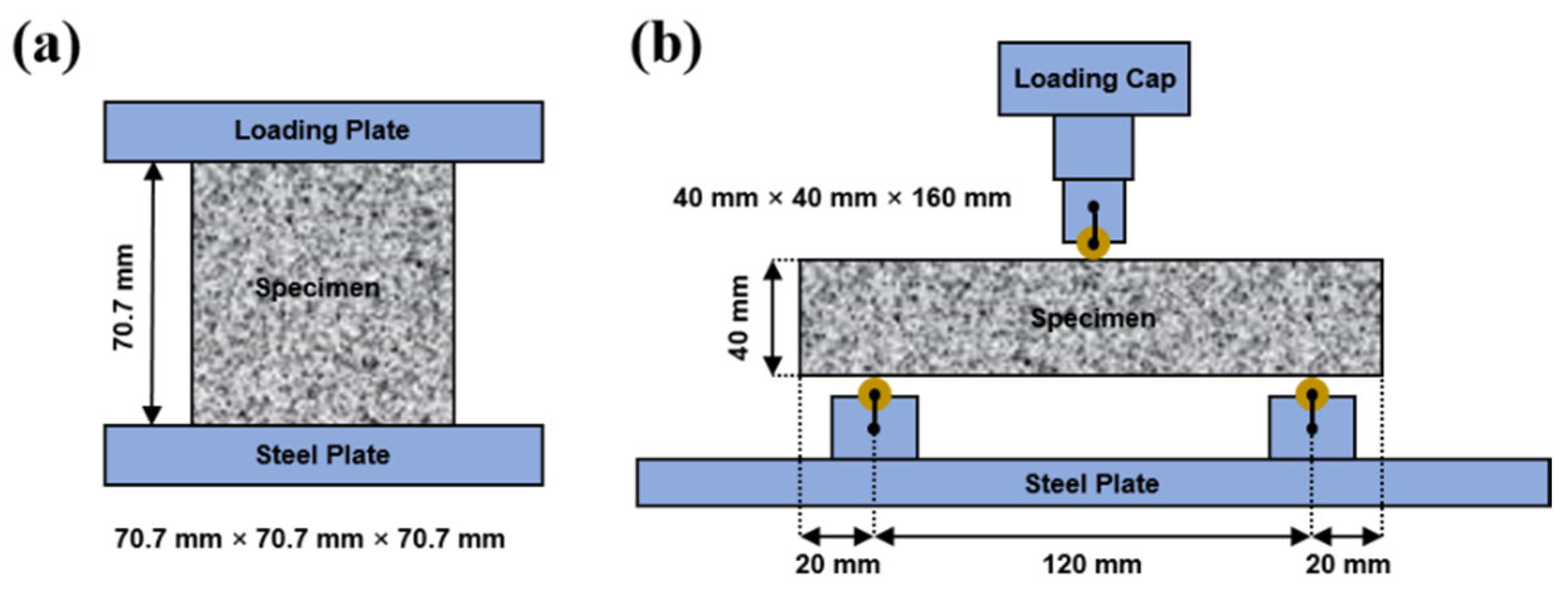
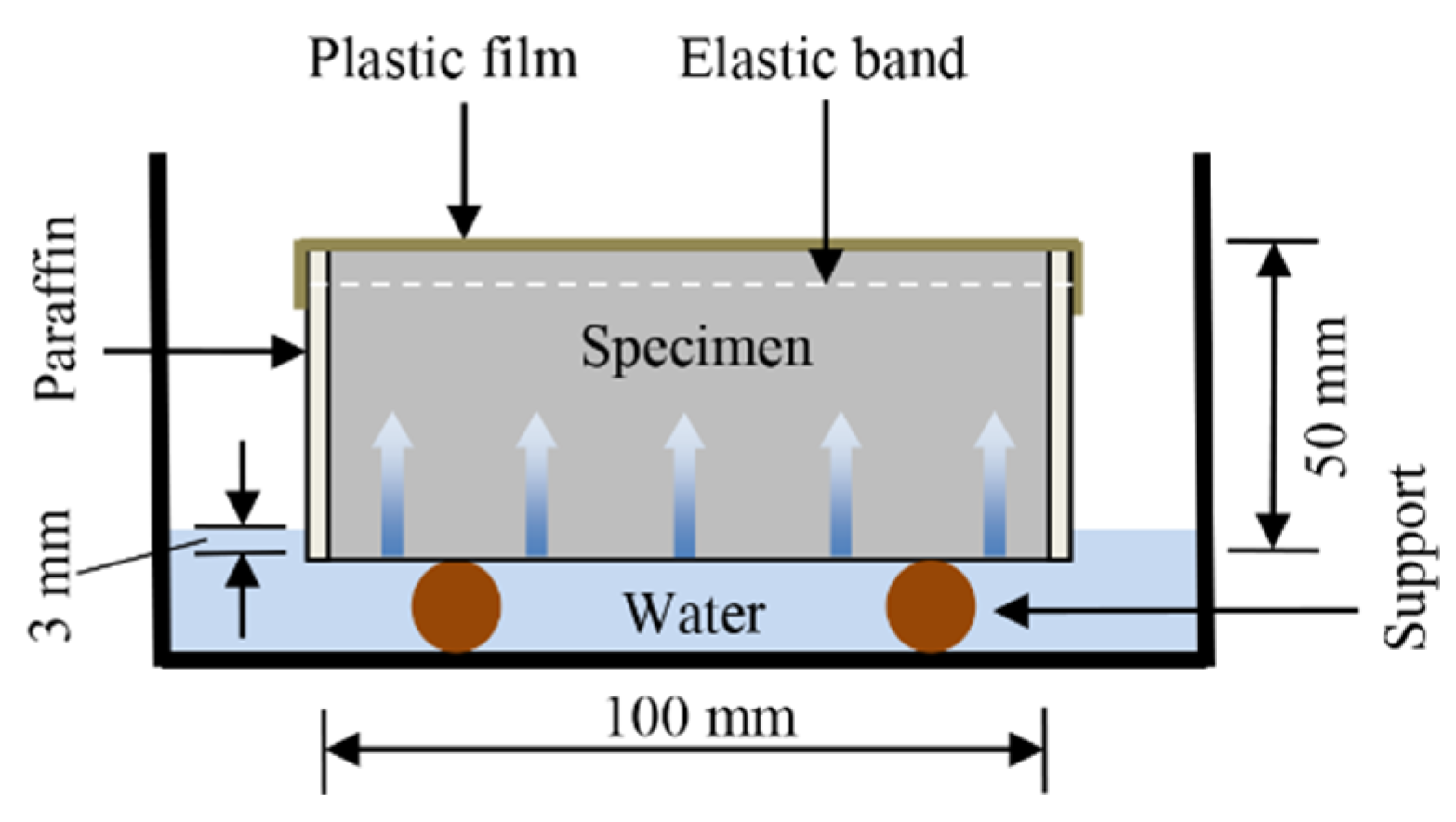
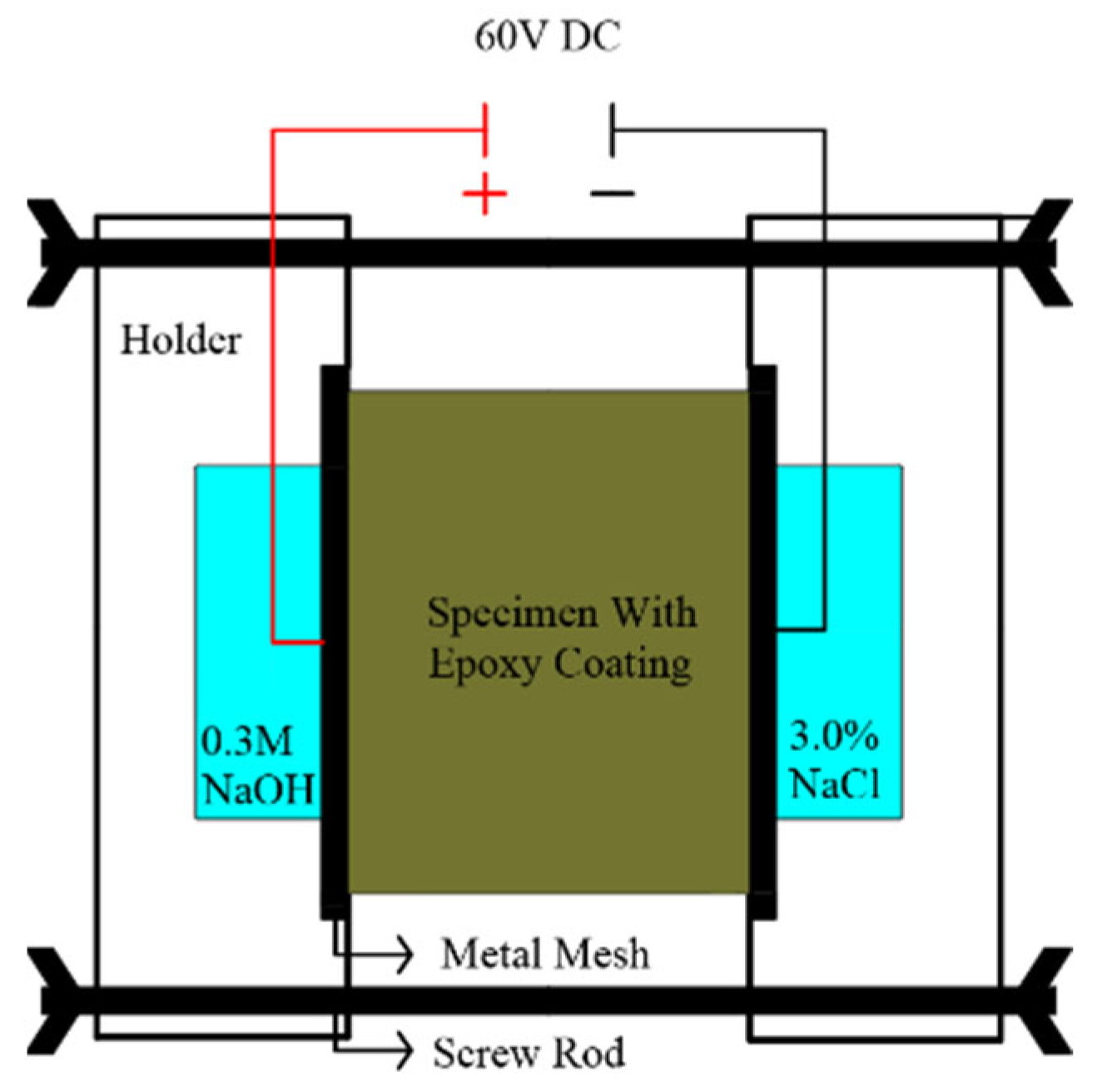
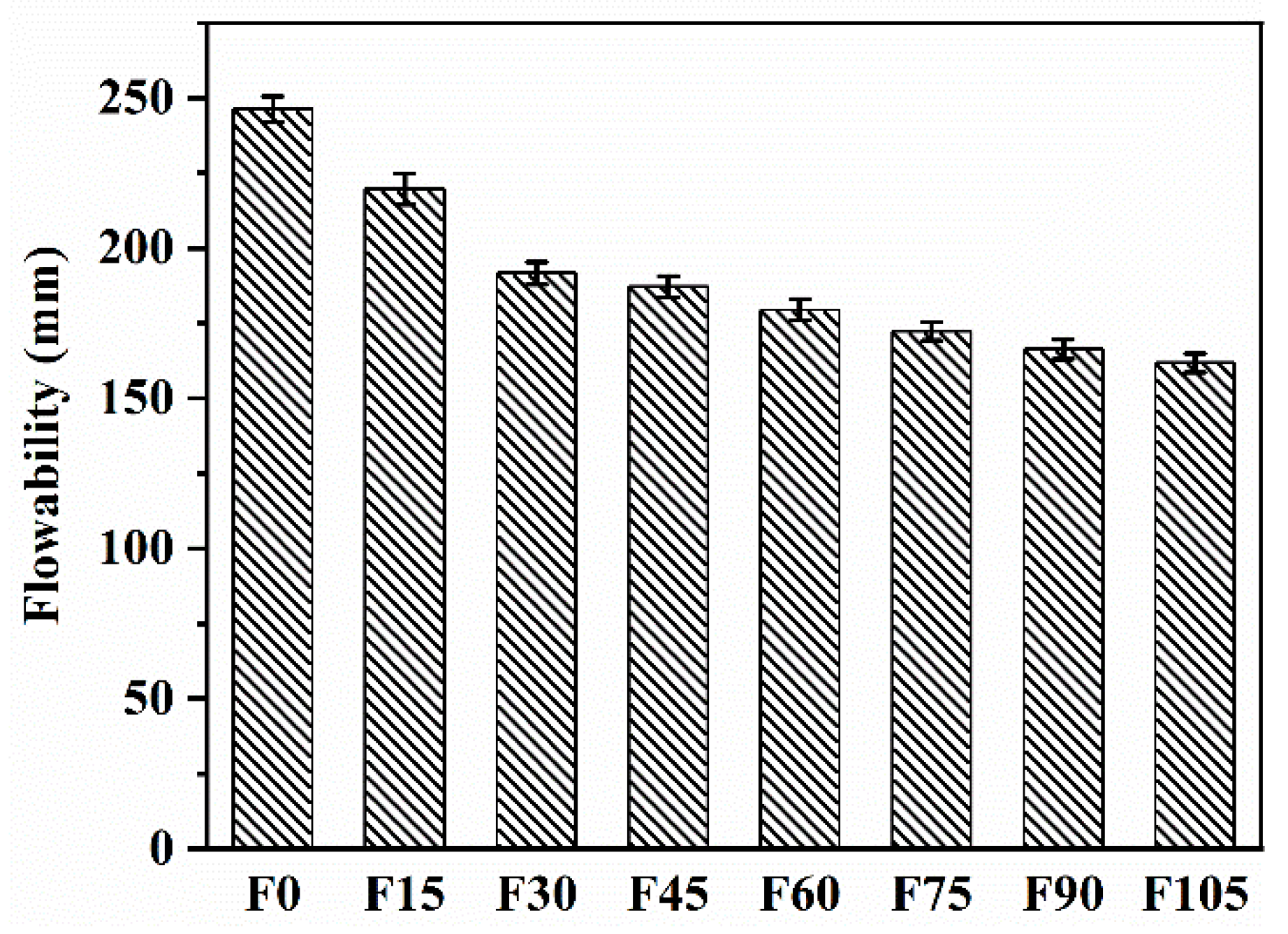
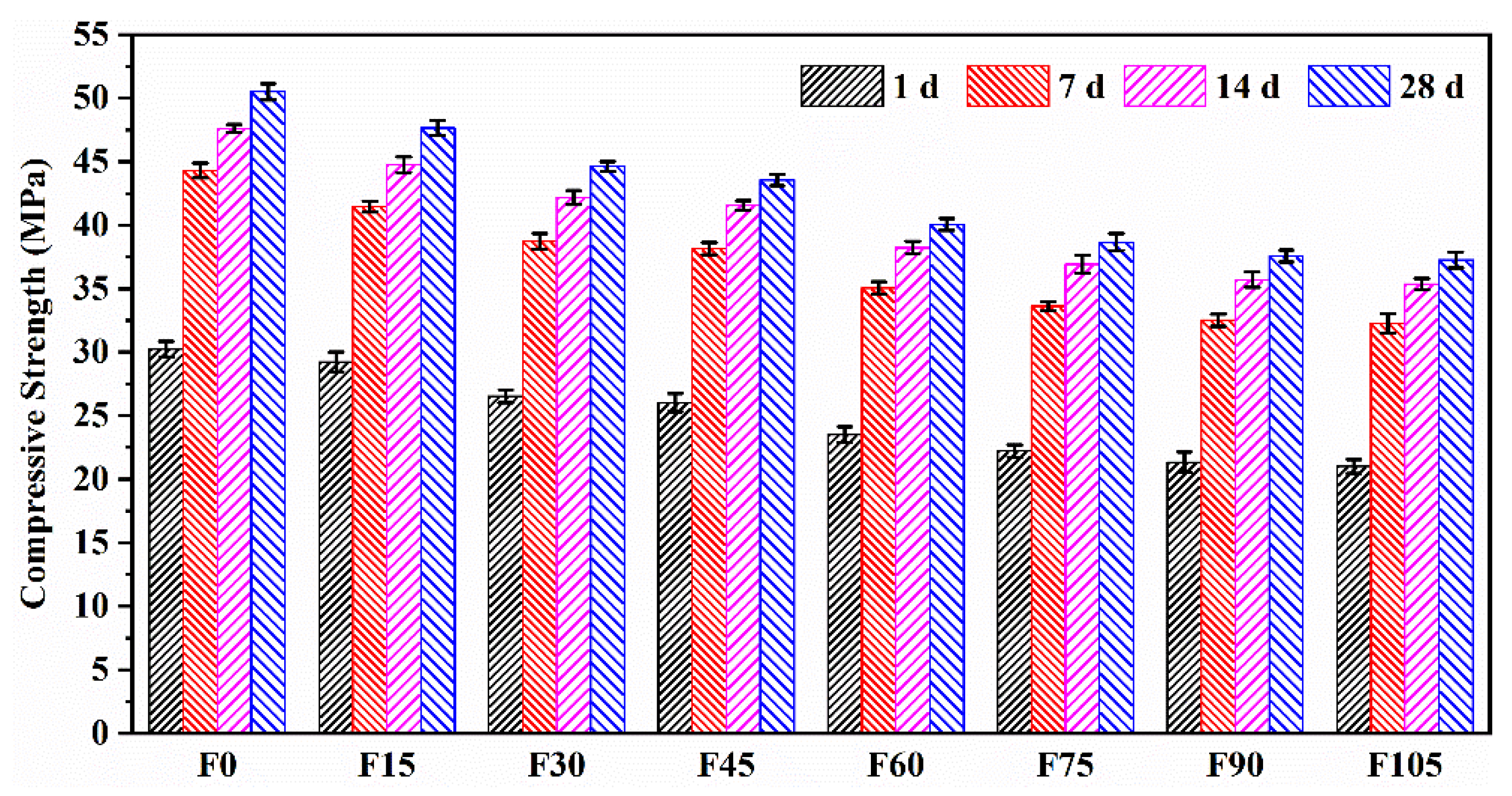
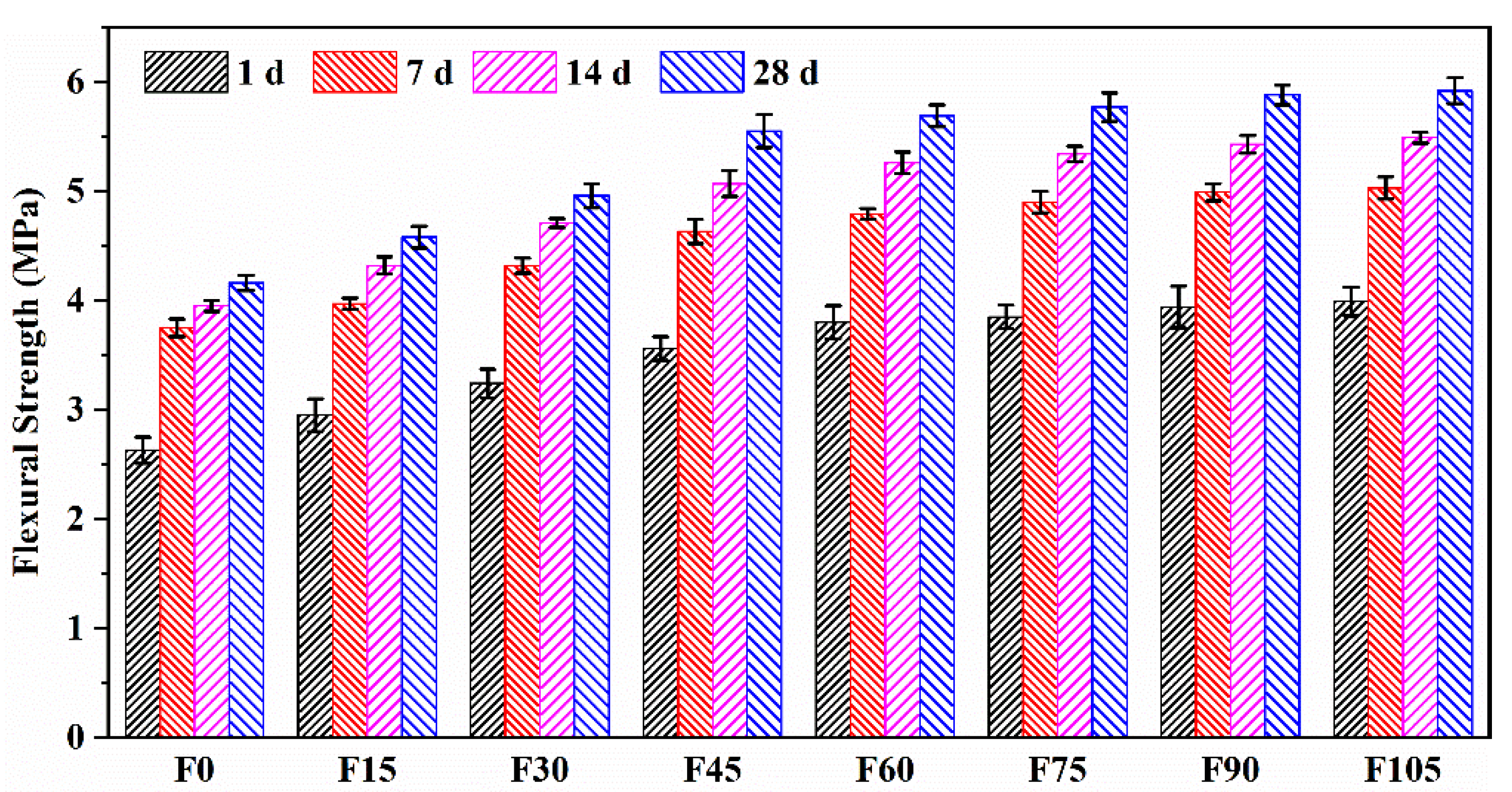
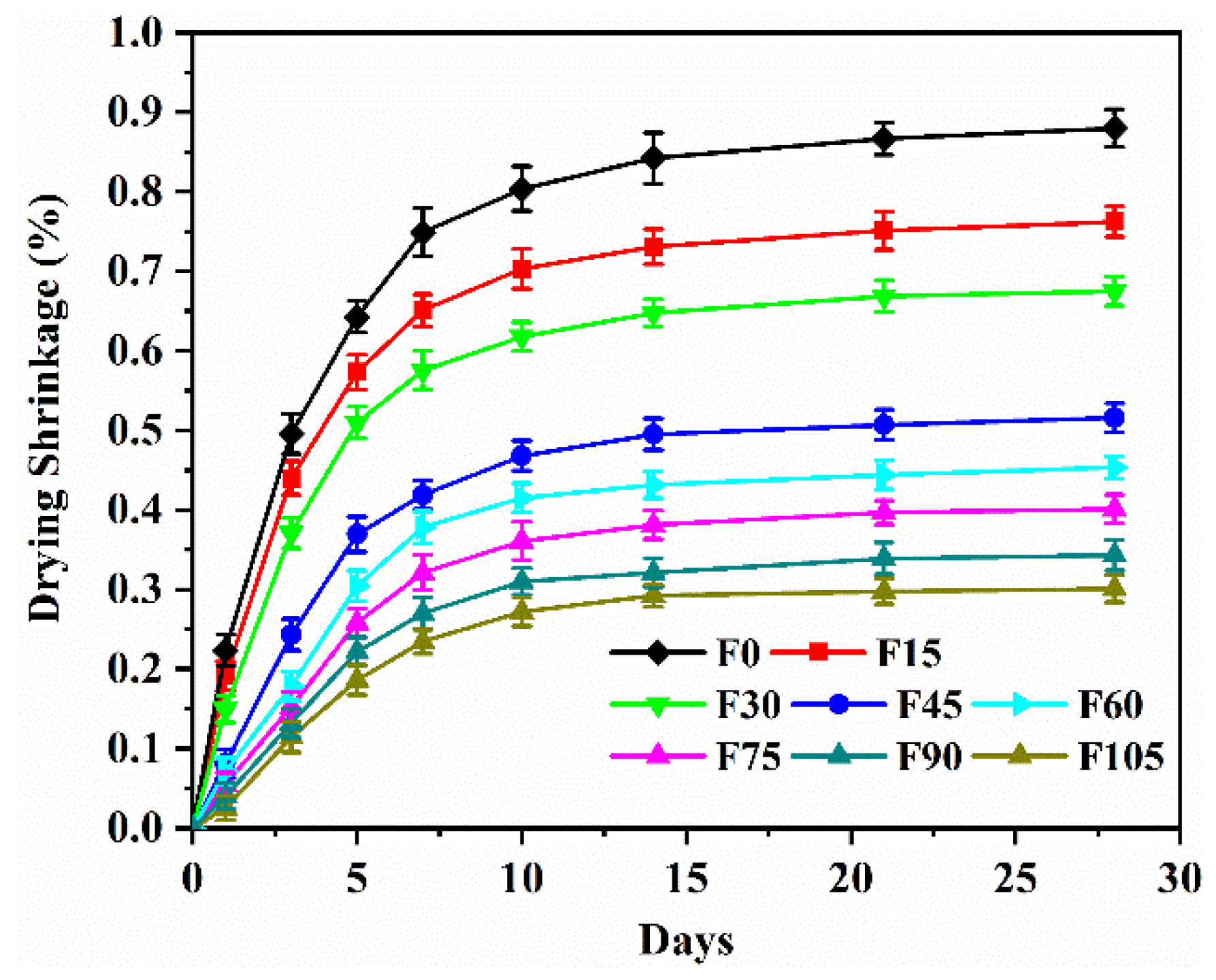
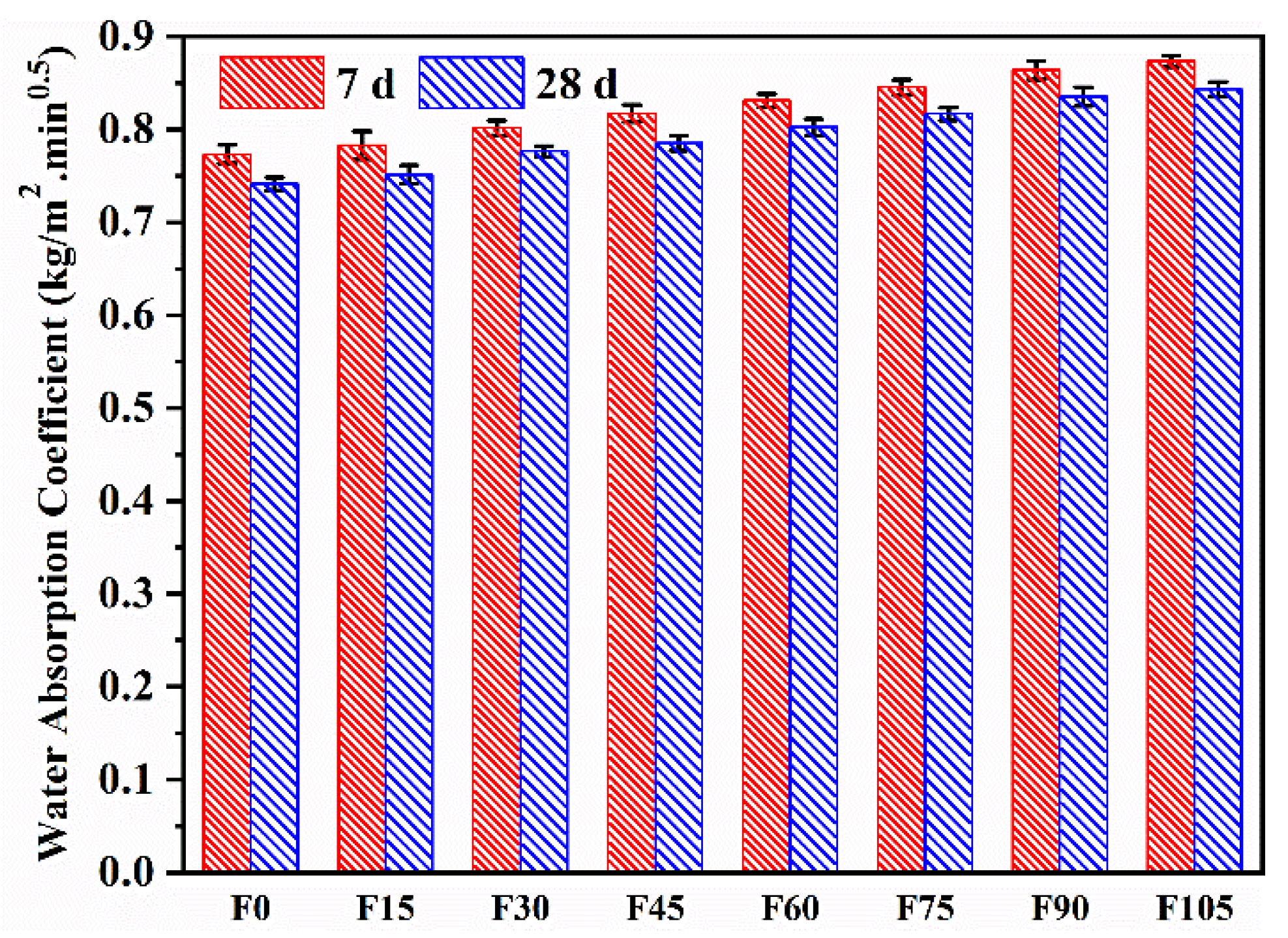
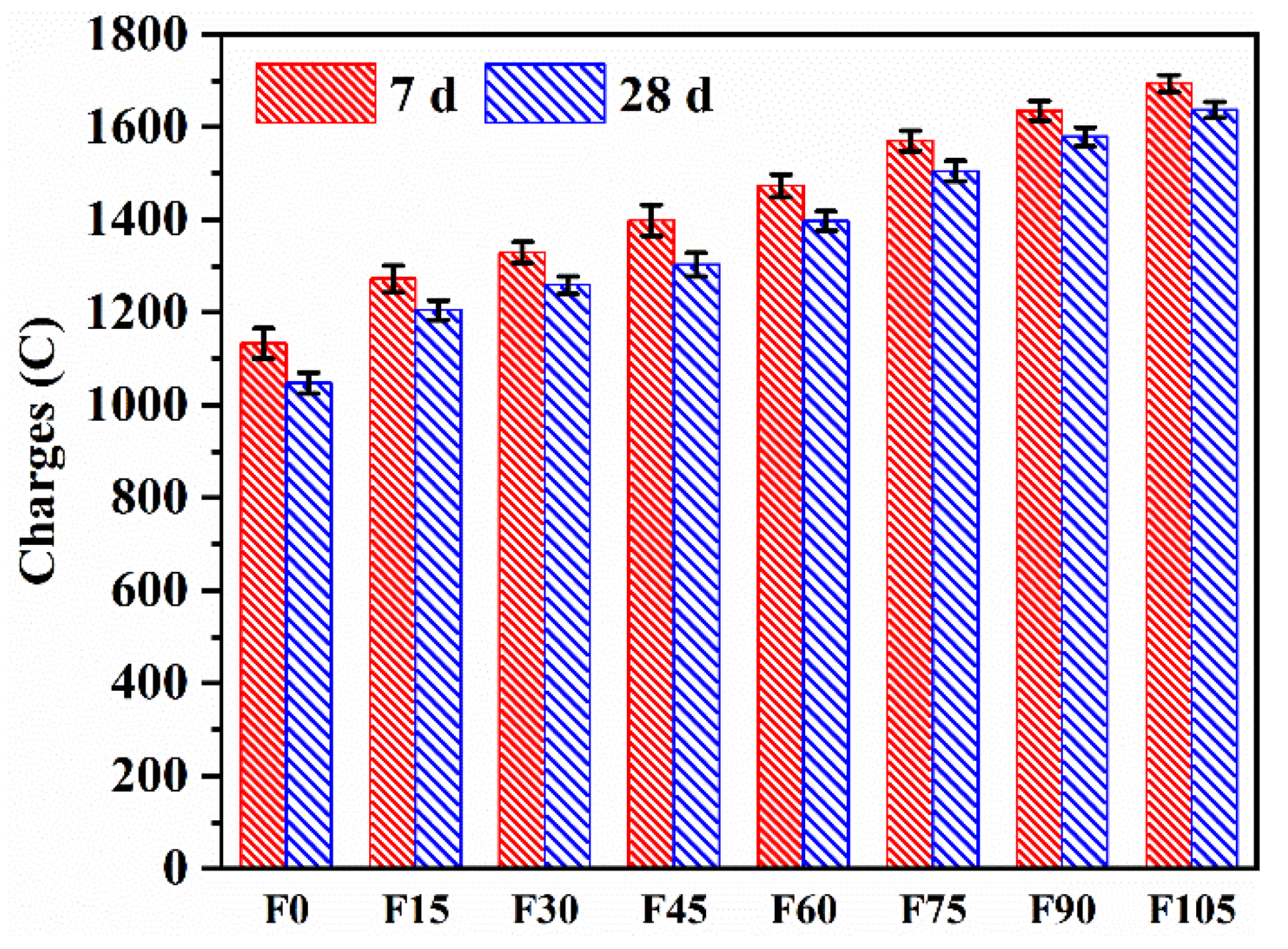
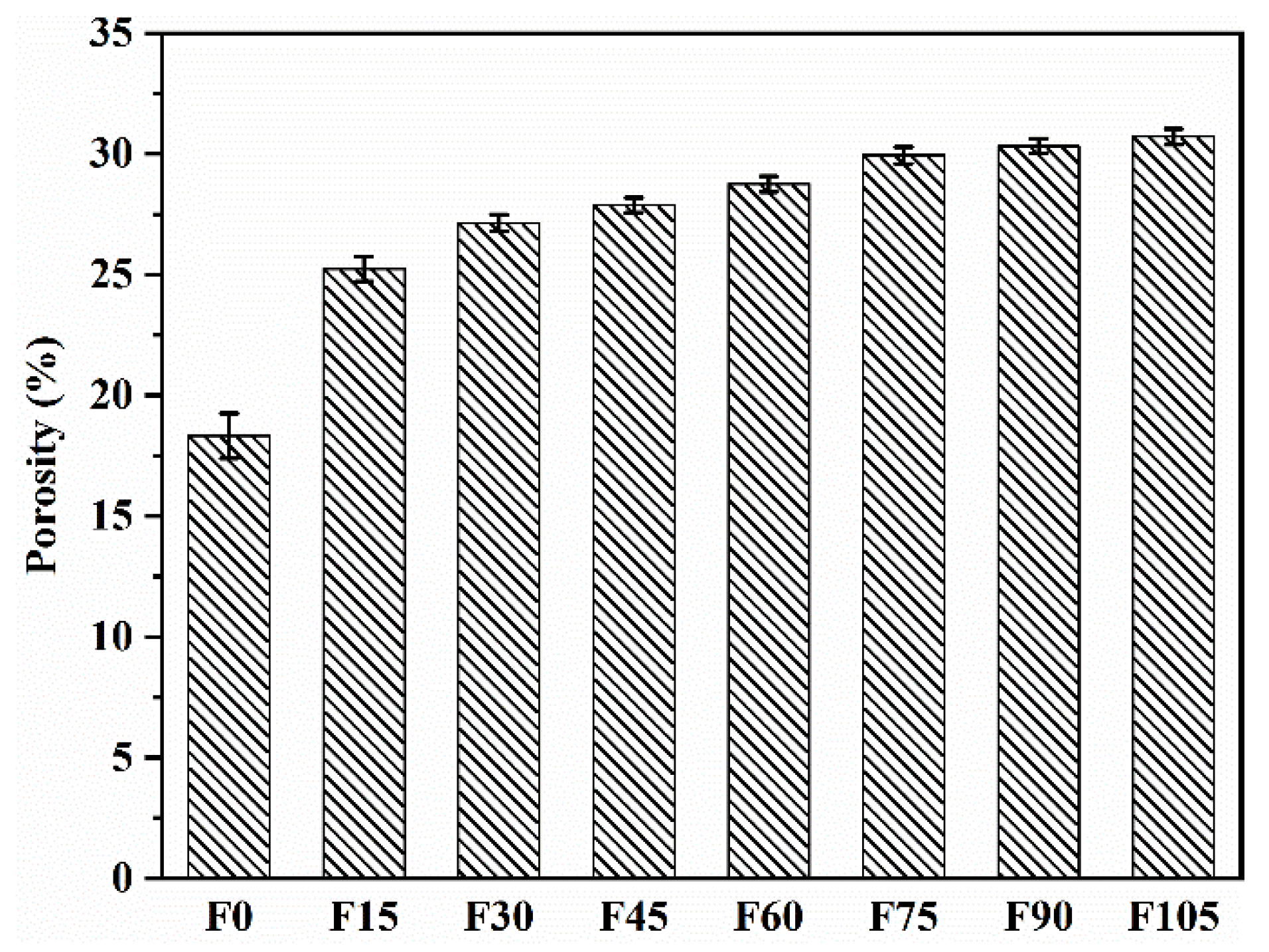
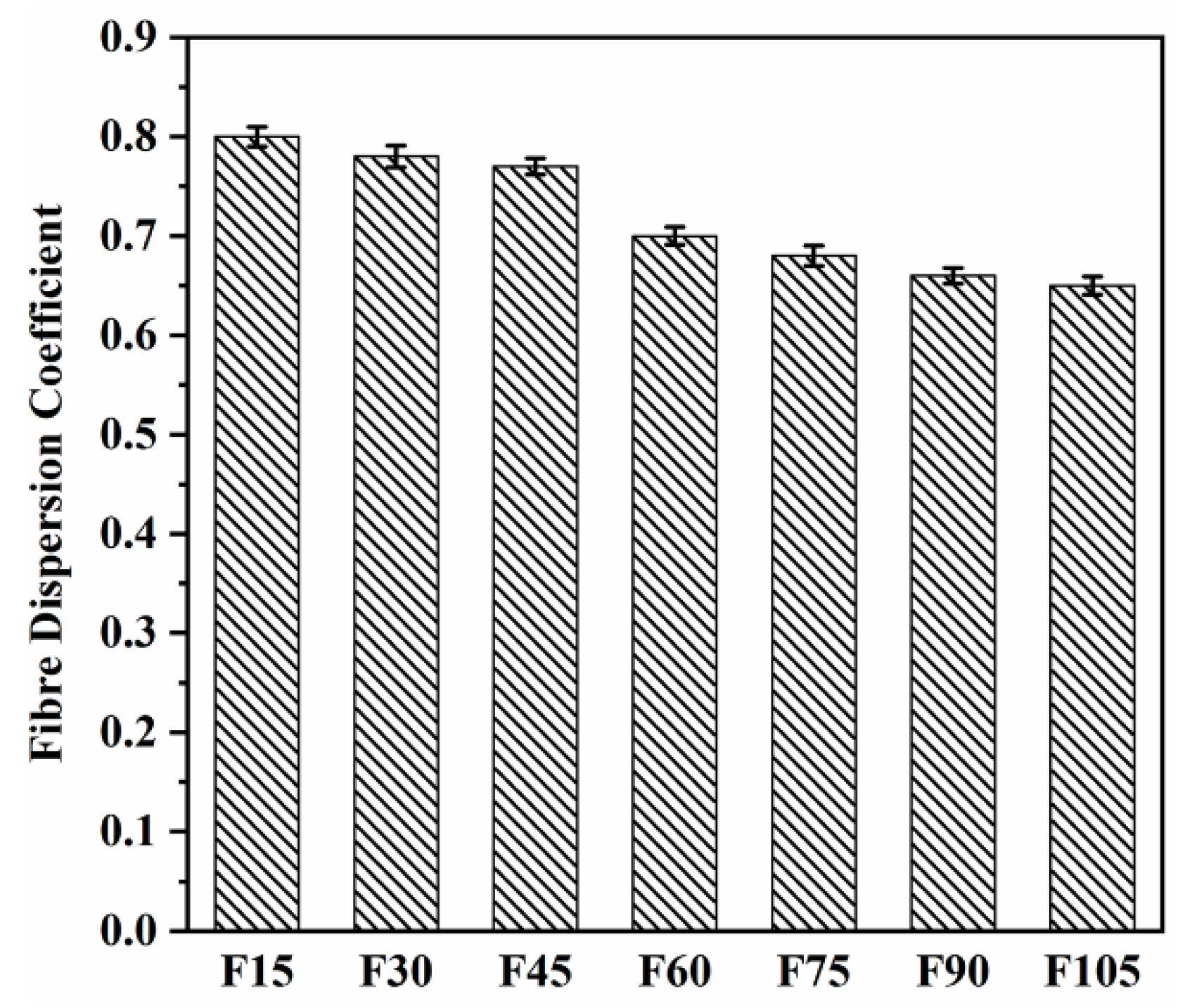

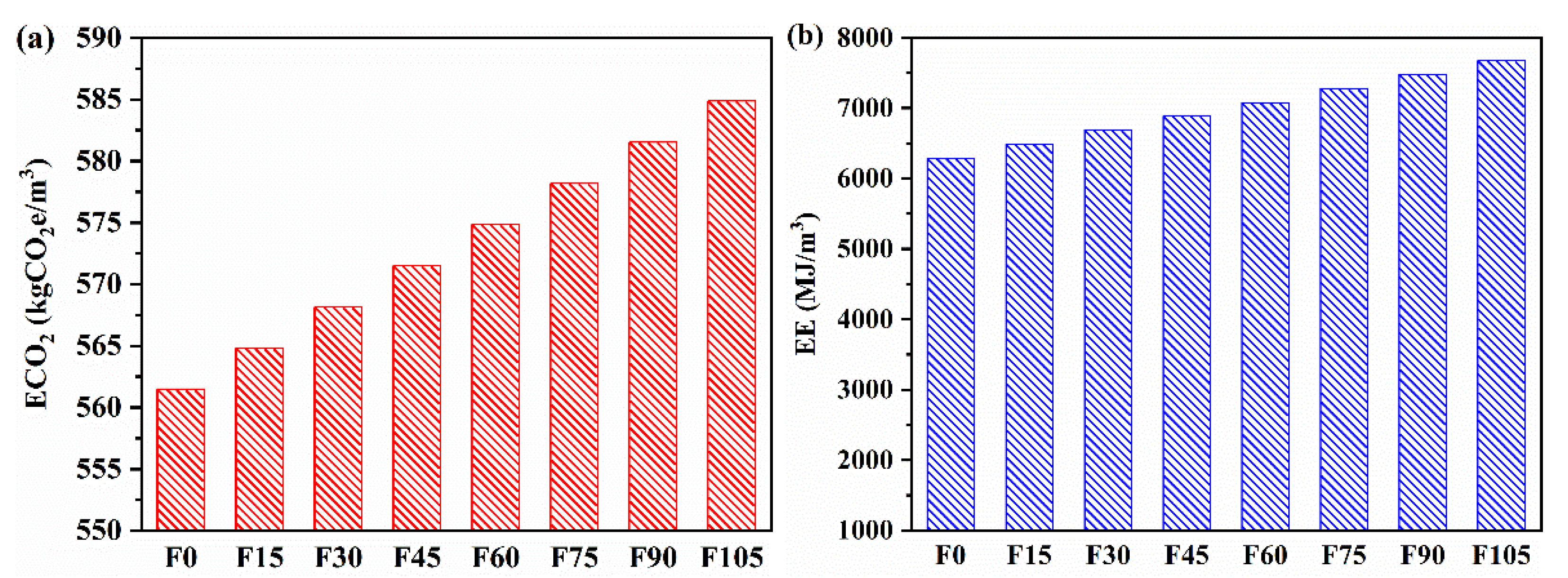
| Constituents | FA | GBFS |
|---|---|---|
| Fe2O3 | 0.42 | 6.49 |
| CaO | 5.2 | 38.23 |
| MgO | 2.35 | 5.66 |
| Al2O3 | 26.98 | 14.01 |
| SiO2 | 61.54 | 35.1 |
| Na2O | 0.2 | 0.1 |
| K2O | 0.15 | 0.07 |
| TiO2 | 0.05 | - |
| MnO | - | 0.17 |
| LOI | 2.88 | 0.49 |
| Characteristics | Values |
|---|---|
| Tensile strength (MPa) | 1466.55 |
| Modulus of elasticity (GPa) | 36.98 |
| Elongation at dry breaking (%) | 7 |
| Length (mm) | 12 ± 0.5 |
| Diameter (μm) | 200 |
| Resistance to hot water (°C) | ≥104 |
| Specific weight | 1.3 |
| Water contact angle (°) | 81.5 |
| Mix ID | FA (kg/m3) | GBFS (kg/m3) | SH (kg/m3) | SS (kg/m3) | Sand (kg/m3) | WOS (kg/m3) | PVA Fibre (vol%) |
|---|---|---|---|---|---|---|---|
| F0 | 481 | 207 | 138 | 276 | 880 | 220 | 0 |
| F15 | 481 | 207 | 138 | 276 | 880 | 220 | 0.15 |
| F30 | 481 | 207 | 138 | 276 | 880 | 220 | 0.30 |
| F45 | 481 | 207 | 138 | 276 | 880 | 220 | 0.45 |
| F60 | 481 | 207 | 138 | 276 | 880 | 220 | 0.60 |
| F75 | 481 | 207 | 138 | 276 | 880 | 220 | 0.75 |
| F90 | 481 | 207 | 138 | 276 | 880 | 220 | 0.90 |
| F105 | 481 | 207 | 138 | 276 | 880 | 220 | 1.05 |
Publisher’s Note: MDPI stays neutral with regard to jurisdictional claims in published maps and institutional affiliations. |
© 2022 by the authors. Licensee MDPI, Basel, Switzerland. This article is an open access article distributed under the terms and conditions of the Creative Commons Attribution (CC BY) license (https://creativecommons.org/licenses/by/4.0/).
Share and Cite
Deng, Z.; Yang, Z.; Bian, J.; Pan, X.; Wu, G.; Guo, F.; Fu, R.; Yan, H.; Deng, Z.; Chen, S. Engineering Properties of PVA Fibre-Reinforced Geopolymer Mortar Containing Waste Oyster Shells. Materials 2022, 15, 7013. https://doi.org/10.3390/ma15197013
Deng Z, Yang Z, Bian J, Pan X, Wu G, Guo F, Fu R, Yan H, Deng Z, Chen S. Engineering Properties of PVA Fibre-Reinforced Geopolymer Mortar Containing Waste Oyster Shells. Materials. 2022; 15(19):7013. https://doi.org/10.3390/ma15197013
Chicago/Turabian StyleDeng, Ziming, Zhangfeng Yang, Jin Bian, Xinxiang Pan, Guanglin Wu, Fei Guo, Ruizhi Fu, Hongjin Yan, Zijun Deng, and Siqi Chen. 2022. "Engineering Properties of PVA Fibre-Reinforced Geopolymer Mortar Containing Waste Oyster Shells" Materials 15, no. 19: 7013. https://doi.org/10.3390/ma15197013
APA StyleDeng, Z., Yang, Z., Bian, J., Pan, X., Wu, G., Guo, F., Fu, R., Yan, H., Deng, Z., & Chen, S. (2022). Engineering Properties of PVA Fibre-Reinforced Geopolymer Mortar Containing Waste Oyster Shells. Materials, 15(19), 7013. https://doi.org/10.3390/ma15197013






